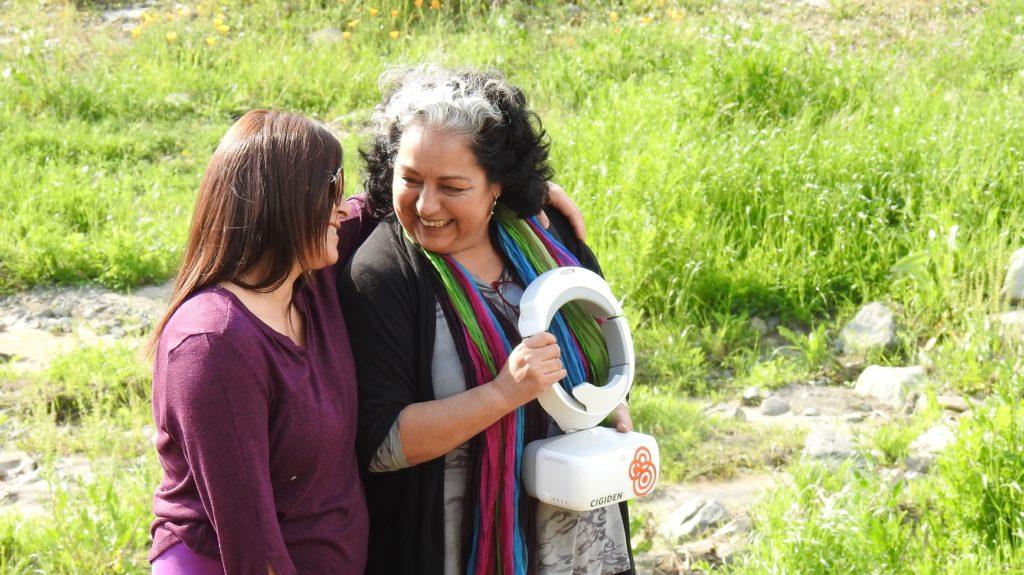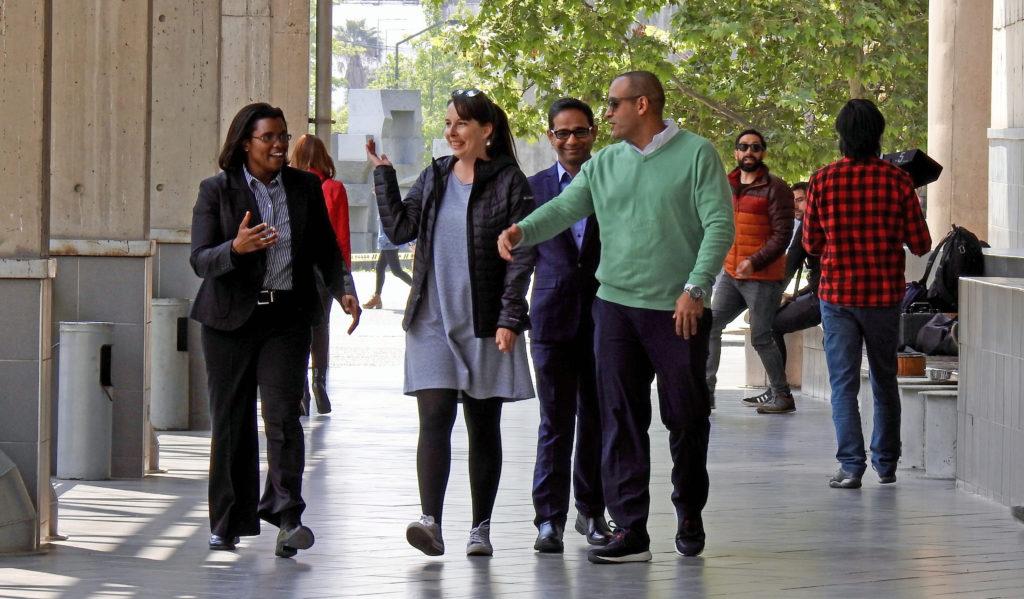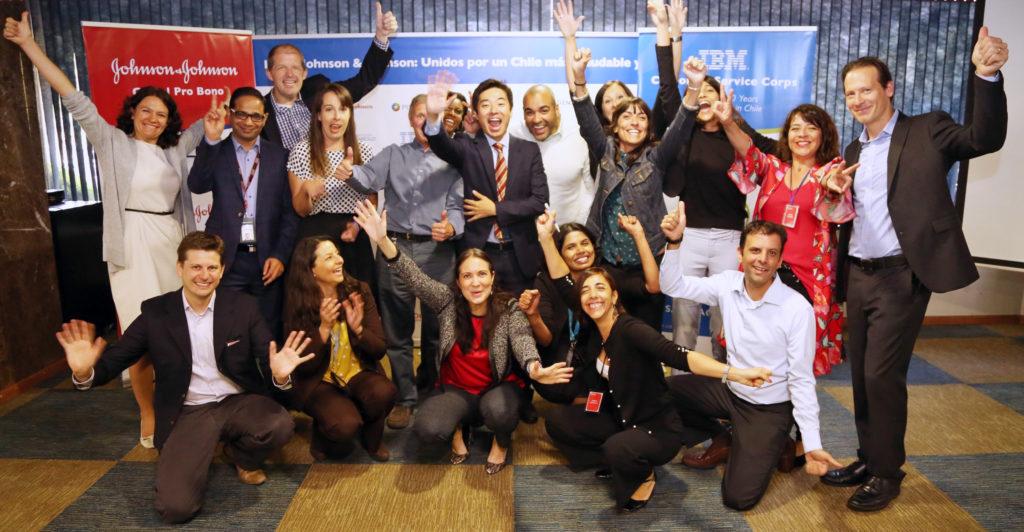Partnering for Disaster Preparedness in Chile
IBM and Johnson & Johnson Team up in Santiago to Strengthen Community Resilience
Global Engagement Forum: Online
The term “natural disaster” is a misnomer. Natural ecosystems often require disturbances such as fires and floods to remain healthy. They have an inherent resilience to the occasional battering. Crises created by destructive natural events might be more aptly referred to as “social disasters,” because of the toll of life and economic damage left in their wake. Framing such events as social disasters places them in a different light, shifting the burden on all sectors of society to proactively manage the threat.
In Chile, many residents are all too familiar with their vulnerability to intensifying clashes with the forces of nature. With the pronounced boundaries of the towering Andes to the east and the Pacific to the west, Chile has the unfortunate distinction of being one of the western hemisphere’s biggest hotspots for such disasters.
Efforts to mitigate risk and quickly respond during and following a crisis have grown significantly, yet many communities are still unclear about evacuation routes or lack the resources to move off precarious hillsides and build stronger structures to protect themselves. After a devastating flood 25 years ago, Marcela Rojas, who lives in the shadow of the mountains outside the capital city of Santiago, continues to fear for her community’s safety, saying, “A question that still lingers at our community assemblies is ‘What is our plan if such an event, which apparently happens every 50 years, happens again? How are we meant to evacuate?’”
Enhancing promising solutions with new perspectives
Disaster risk reduction is a complex social challenge, and one that requires high levels of coordination between government, researchers, NGOs, and at-risk communities to be better prepared. There is also an important role for business to play, and global leaders IBM and Johnson & Johnson are among a number of pioneering companies offering their most valuable asset, their employees, as pro bono consultants to support high-impact projects, organizations, and the communities they serve.
These cross-sector collaborations are not like old-school, philanthropic check-writing ceremonies because each of the partners provides and receives tangible value. Piera Curotto, Corporate Citizenship Manager for IBM Latin America, explained the motivation for expanding the company’s social impact program year after year, saying, “IBM’s Corporate Service Corps program delivers a triple impact. Not only does the community benefit from this work with nonprofits, the employee also gains from an experience working with colleagues from other parts of the world, from distinct cultures, and in an immersive environment. The company receives value in terms of understanding new markets and sharing what is new with IBM.”
In 2018, IBM celebrated the 10-year anniversary of the Corporate Service Corps (CSC) social impact program. As the longest running program of its kind dealing with a wide range of social challenges, the CSC has consistently experimented with new approaches and partnerships, striving to deepen economic and social benefits to mission-driven organizations and their communities, while building leadership competencies and spurring innovative thinking for the participating corporate employees.
A team-based initiative, the Johnson & Johnson Global Pro Bono program completed its second year of programming in 2018 and, like the IBM Corporate Service Corps, has a strong focus on community resilience. Seeking to learn from a well-established program, Yezenia Ramos, Senior Manager for Employee Engagement at Johnson & Johnson explained how her team reached out to IBM for guidance. “We knew that IBM had 10 years of experience running their program and we wanted to compare their processes with what we had in mind for ours. We learned that they allowed other companies to join their program to learn first-hand, so we thought, ‘What if we worked together as partners bringing together the power of an IT company and that of a global healthcare company?’ We planted the idea and a year later it became a reality. We brought together the resources of two companies with different company cultures, skillsets, talents, and methodologies, but we made it work because we all had the end user and community in mind. It was phenomenal,” she said.
In October 2018, the two companies partnered and deployed 15 employees, nine employees from IBM and six from Johnson & Johnson, together representing 10 countries, to Santiago to leverage their core capabilities in IT and healthcare to support four organizations focused on creating a more resilient Chile.
PYXERA Global, the partnership’s facilitator, worked closely with the corporate partners to identify host organizations with mission-critical needs—such as operating more efficiently, navigating obstacles, or scaling impact—that aligned with the core skillsets of their employee base. PYXERA Global Latin America program manager Carolina Gowland, explained, “As a backbone organization coordinating project planning and execution, matching participating employees with high-potential organizations on the cusp of scaling their solutions is a central goal. In this case, we could not have asked for better partners to achieve this.”
One sub-team, comprised of two employees from IBM and two employees from Johnson & Johnson, collaborated with the Research Center for Integrated Disaster Risk Management (CIGIDEN), a government-funded initiative launched in 2011 in response to one of the strongest and costliest earthquakes in Chilean history. CIGIDEN is managed by four major Chilean universities and consists of an interdisciplinary team of researchers, engineers, geologists, and anthropologists, among other experts. Its cross-discipline approach created an opening to invite additional partners.
CIGIDEN’s principle investigator, Gonzalo Bacigalupe, described the motivation for the partnership, saying, “As a publicly-funded scientific center, our focus is on research that has a significant impact on public policy in Chile around making our society more resilient. It requires resources that we cannot necessarily bring into a research center. We thought that it would be helpful to have the resources that the business community or the IT community might bring. In that way, the IBM and Johnson & Johnson partnership brings both.”
Harnessing drone technology for greater awareness
One of the ways CIGIDEN is informing its research and igniting a public conversation around disaster risk reduction is through its DroneLab project, which is capturing an abundance of aerial data. The drone data contributes to detailed mapping of infrastructure, population distribution, high vulnerability zones, and geology, among other information that can help educate and inform preparedness efforts from the household to the regional scale. However, finding a way to organize and share the aggregated data proved a challenge that initiated the partnership with the multinational companies.
Pro bono consultant Dawn Mims, Lead Analyst for Supply Chain Data Management at Johnson & Johnson in New Jersey, described her impressions of the assignment, explaining “The optimal outcome from the solution we are putting forward with our stakeholders is a platform of data that will help researchers and other organizations to develop a disaster protocol to minimize structural damage as well as human loss.” During a site visit to the coastal city of Valparaiso where DroneLab has worked with the community and researchers, Mims went on to say, “In my case it’s rare that I get a chance to work so close to the community that I’m serving, so I think this will help to put the right strategy in place.”
For the 15 pro bono consultants in the larger cohort, representing offices from Canada to Korea and Malaysia to Spain, the immersive experience shared among them created a strong bond. The level of camaraderie throughout the engagement blurred the lines between the corporate partners. Barbora Lebedova, Request for Service Manager for IBM Slovakia, spoke to the experience of collaborating across company cultures, saying, “Working with Johnson & Johnson is great…I see that people from IBM have more of a technical background while Johnson & Johnson are more into the business side. Our partners who work with us, they are great at analytics and supply chain, so it’s another angle of looking at the same problem, which I think brings a lot of additional value to all of us.”
Bacigalupe feels similarly, observing that “some of their questions have helped us think about the platform in ways that we had not thought about.” While the engagement deliverable—a digital platform that presents the synthesized data from the drones in a user-friendly format—is not yet ready for public use, the convergence of stakeholders is remarkable, and a recipe for success. From government and academia to community-based organizations, private citizens, and international corporate employees, all stakeholders are contributing their time, resources, and expertise. An inclusive approach to disaster preparedness saves lives, protects the most vulnerable, and presents a model that can serve the rest of the global community.
Community leader Marcela Rojas shares this optimism, expressing that “with this use of resources and technology, we hope to have solutions in advance of another traumatic event for our community, to save more lives.”




